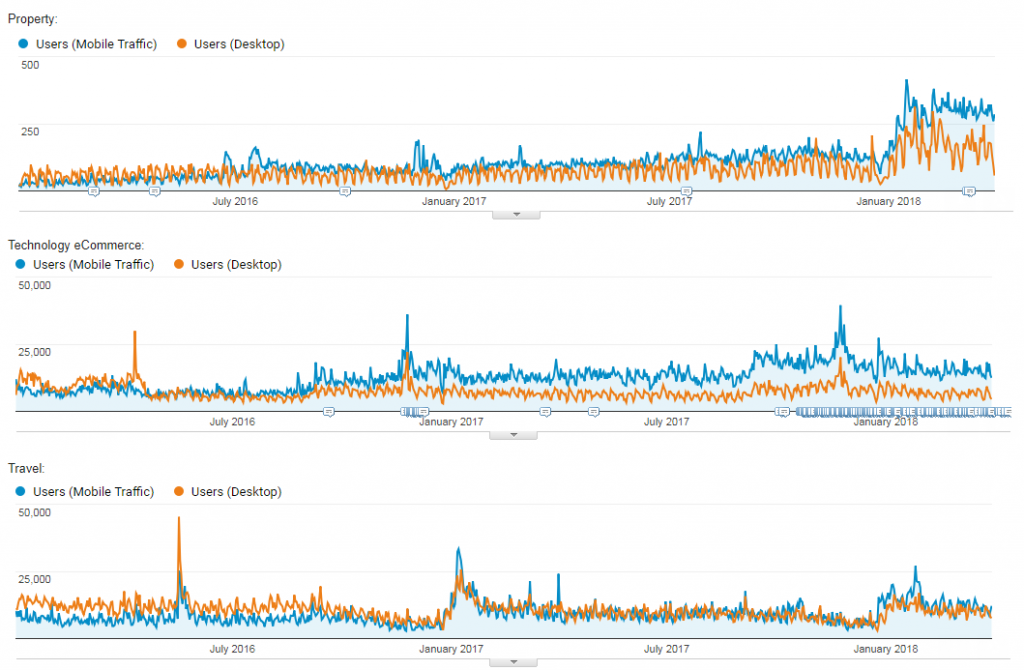
Google’s mobile-first index is here, causing fresh uncertainty about potential SEO impacts – but there are a number of proactive steps to take to manage risk and maximize ranking opportunities.
Rather than passively wait to feel the impact of the shift to mobile-first indexation,[1] we advise companies to take six specific actions to prepare for opportunities and protect site performance as the mobile-first index is rolled out throughout 2018.
Brands that have been prioritizing mobile performance shouldn’t experience a negative impact from the mobile-first index, but an honest and systematic re-evaluation is required. Companies who have allowed the mobile and desktop experience to diverge over the years will likely experience change – rankings could be lost (or gained) as a result of the switch.
Before diving in and making changes to prepare for the mobile-first index, we recommend running a full audit of current desktop and mobile rankings in all the regions your company does business in, along with top performing pages.
Tracking this performance over time, any losses or gains in keyword visibility should be clear to see – along with potential causes. Across the six actions below the common thread is Google’s determination to provide accurate answers to users, in the channel that is used most frequently – mobile.
Keeping that at the heart of your SEO strategy and things should be fine – but having a plan certainly helps.
Identify risks
- Action one – go mobile-responsive
Even today, too few marketers and SEO professionals meaningfully differentiate between responsive, mobile-friendly and standalone mobile sites – but that difference will become especially important in 2018.


